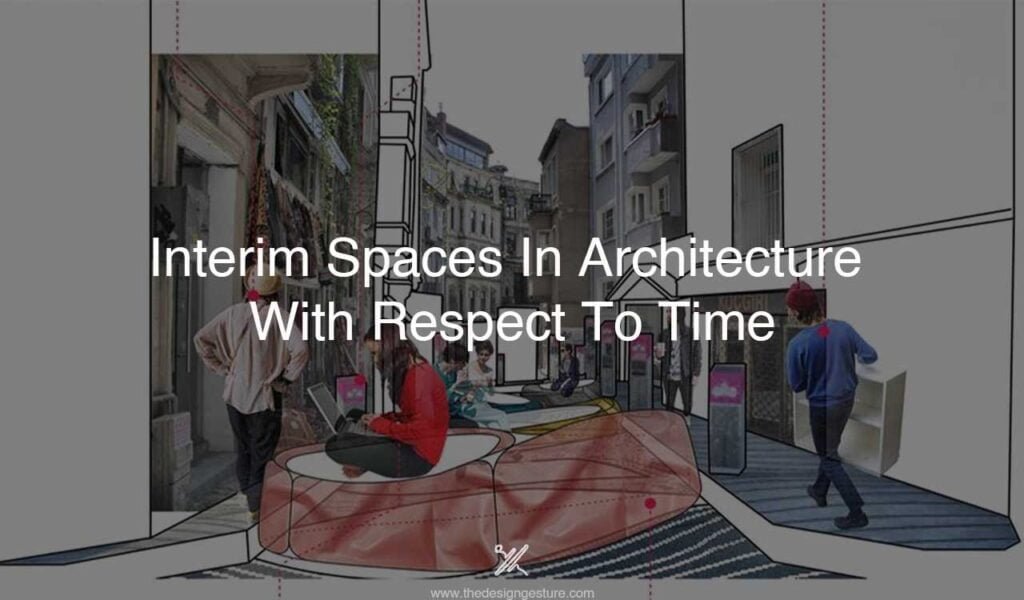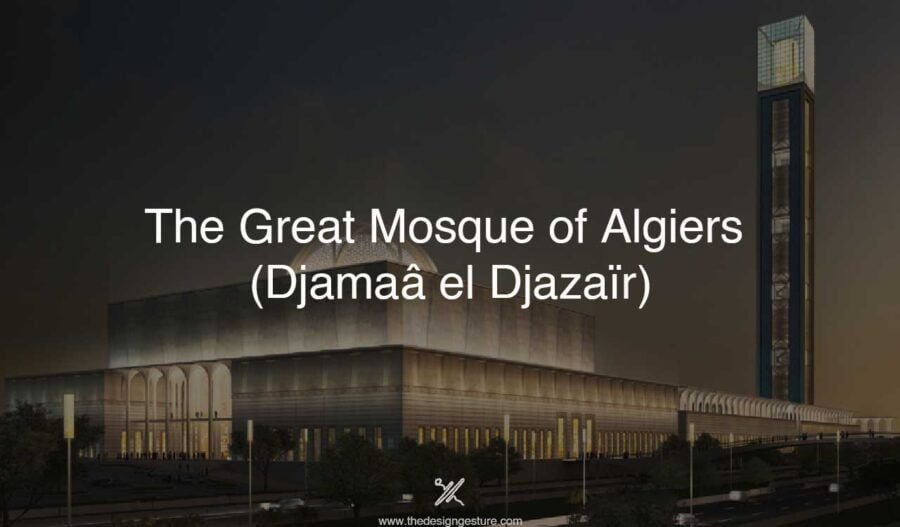Table of Contents
Introduction
Architecture is such a beautiful and complex field of Experiment, expression, livelihood, Sense of belongingness, scene of security, pride, constant change on the surface of built form through its surroundings, Elements, associations, and much more. Everyone has different varied opinions and perceptions about what architecture is and how it affects them. Through the literature and education we are taught; we see spaces becoming places just from our experience and imagination, but layman also makes their spaces in a similar manner where their associations are attached.
For instance, the banyan tree is considered sacred, and with time, people’s associations are joined together, and that tree becomes a place of worship and a place of emotions. Similarly, we see these small spaces turning into places and with time the interim spaces give different roles to each individual that connects to that space. If in the morning the front paved space in front of a shop or restaurant is dedicated to two-wheeler parking, then in the evening or night it becomes a gathering place where one enjoys their leisure time.
Relation Of Time In Architecture
It is very evident that time is an inseparable factor when linked with the built form. It defines the richness of building technology, culture, and heritage, and also to the extent that it formulates the imaginary boundary of belongingness and demarcates the confined spaces. And this thus becomes one of the factors for defining the nature of temporal architecture. There are mainly three aspects of temporal spaces.
- Influence of space on the experience of time passage
- Perceived duration of age of building
- The aspect of the timelessness of the design principles of architecture.
Influence of space on the experience of time passage –
The elaborate explanation of we perceive time and hence how it influences the spaces we are in that time and moment is again very subjective. Though with our peculiar observation, it happens every now and then. Waiting in a hospital lobby with a window or two to gaze outside, whether it is buildings or nature, is always observing the small details and in such situations, the time always feels stretched.
And so the relation which is established here is that waiting as an activity gives us a direct experience of time and this direct involvement might be perceived differently due to the proportion and scale of the built environment. A closed narrow low height ceiling might give us stretched, trapped feeling whereas, in contradictory a vast open space, an enclosure on three sides might eradicate that feeling. Therefore, designing hospitals needs both types of spaces for patients to relate to the spaces for better recovery.
Perceived duration of age of building
On this point, Architect Juhani Pallasmaa correctly states that contemporary architecture is like a snapshot-friendly building where there is a flatness of material and everything is too much fixated.
In modern architecture, the building reflects upon the transition and uniformity of light and material and actually embodies the man’s needs and emotions by withstanding the changing light situation, weathering, and wear and tear. And so a house becomes a home until the man has expressed himself through tangible and intangible aspects as a reflection in his home.
Kevin Nute, a Professor from the University of Oregon, has been investigating this. According to him, the indoor environment should be designed in such a manner that it gives a positive effect and at the same time follows upon the individual’s past, present, and future. Developing and designing the architectural elements that are engaging makes them appreciate the present.
The aspect of the timelessness of the design principles of architecture
There could be many philosophies and theories which could be stated. Home is the best-case scenario to explain this. The home, in its fundamental nature, is to provide and protect us from all the wind, rain, and other external factors. This establishes humans need protection from the terror of time to hide our vulnerability. The other theory which could be stated is by Harries, who defines timelessness as design and building ideally following principles that are not tied to a particular fashion or epoch.
Examples Of Temporary Architecture
Pavilions are the best example to illustrate the nature of temporary architecture and how can it affects the users and the spaces around it. The structure itself provides a lot of play and experimentation for the users, letting its surrounding context also change, divert, and grow. Over time, the definition of pavilions has changed from being the visual structures in mansions to the interactive structures in Urban fabric.
Bookworm Pavillion, Mumbai by NUDES
It is a combination of 3600 modular components that were fabricated and placed in such a manner that it forms a gliding bookworm. It was conceptualized to encourage reading amongst youngsters and adults. These modular components are made from recycled plywood that has a low carbon footprint.
Photo from Re-thinking future Bookworm Pavillion, Sameer Chawda
Circular Garden Pavilion, Porto by Diogo Aguiar Studio
The design is done by Alvaro Siza. It has two concentric wooden circles which form the pavilion and are a cultural institution. The curvilinear facades control the incoming light and keep the interior dark which could be used in hosting film screenings.
Photo from Re-thinking future Circular Garden Pavilion, Fernando Guerra
Biobasecamp Pavilion, Eindhoven by Studio Marco Vermeulen
This structure was made to show that the use of the right material and exploration of structures can lead to more sustainable construction. This pavilion acts as an interactive space for the citizens as it invites visitors to the exhibition on ground level or to climb up to the roof level to take a breather from their busy schedules. The structure is made using cross-laminated timber technology which reduces the carbon and nitrogen amounts in the air.
Photo from Re-thinking future Biobasecamp Pavilion, Ronald Tilleman
‘Body Absent’ a temporary Memorial to Raise Awareness about Human Rights-
Architect- Miguel Uribe Rubilar
This project serves as a wake-up call and is located in Santiago, Chile, on the site of a political execution site from Chile’s military dictatorship. The source claimed that the political detainees would be made to run down the river. These incidents left a lasting impression.
The project was put on hold for legal reasons, and it was then suggested to be a temporary memorial: an architectural work intended to temporarily appropriate the memory of the victims and public places, as well as give meaning and worth to the scenes of their executions and graves.
In order to reimagine their purpose, the proposal suggests using 10 parachutes as the major component of this commemoration. The previous use is eliminated by hanging and inverting. Each parachute was suspended from a system of steel cables, each of which was supported by a detachable structure made of tubular steel profile, for a total length of 62 meters. Plaster and lime were used to outline the project’s ground level, producing a white imprint on the ground.
Temporal Attributes In Public interim Spaces
Case of Vendors and Markets-
There are many cases where the redesign and revitalization of the old part of the city are to be done and one such example is Bhadra Square in Ahmedabad, which was declared a heritage site by UNESCO. In this particular square, vendors come to sell a variety of products and due to this variety and range of products, goods, and prices, people from all over the city came to visit it.
This was before the revitalization of the place but also after post-design, these vendors came for selling the products and adapted to the new palace. This leads to a quest that how can the designers understand the informality of spaces which is flexible, and mobile in nature so that they can be integrated into the urban fabric.
Such informal and mobile nature structures are never part of urban design. These are as important as the projects such as the riverfront, public gardens, etc. These vendors change the fabric of the city and with careful planning, these too could be made more hygienic, interactive, and safe places. Where we can witness the ever-changing nature of temporal elements which results in different places every time.
The nature of such temporariness and the thus transitory path leads to more curiosity about what exactly plays a pivotal role in defining the “Temporality” of spaces which eventually becomes places.
Conclusion
Architecture is a field where subjectivity is considered second nature. Most importantly when one tries to theories the topics such as psychology and Architecture or Temporality in Architecture, it always sparks the debate upon which factors should be considered primary in attributing to making temporariness of space. And if the cultural association plays a more vital role than the architectural elements. It is a complex situation and does not have a unidirectional answer to it. Or perhaps it boils down to a point where we start questioning the importance of examining these temporal spaces.




